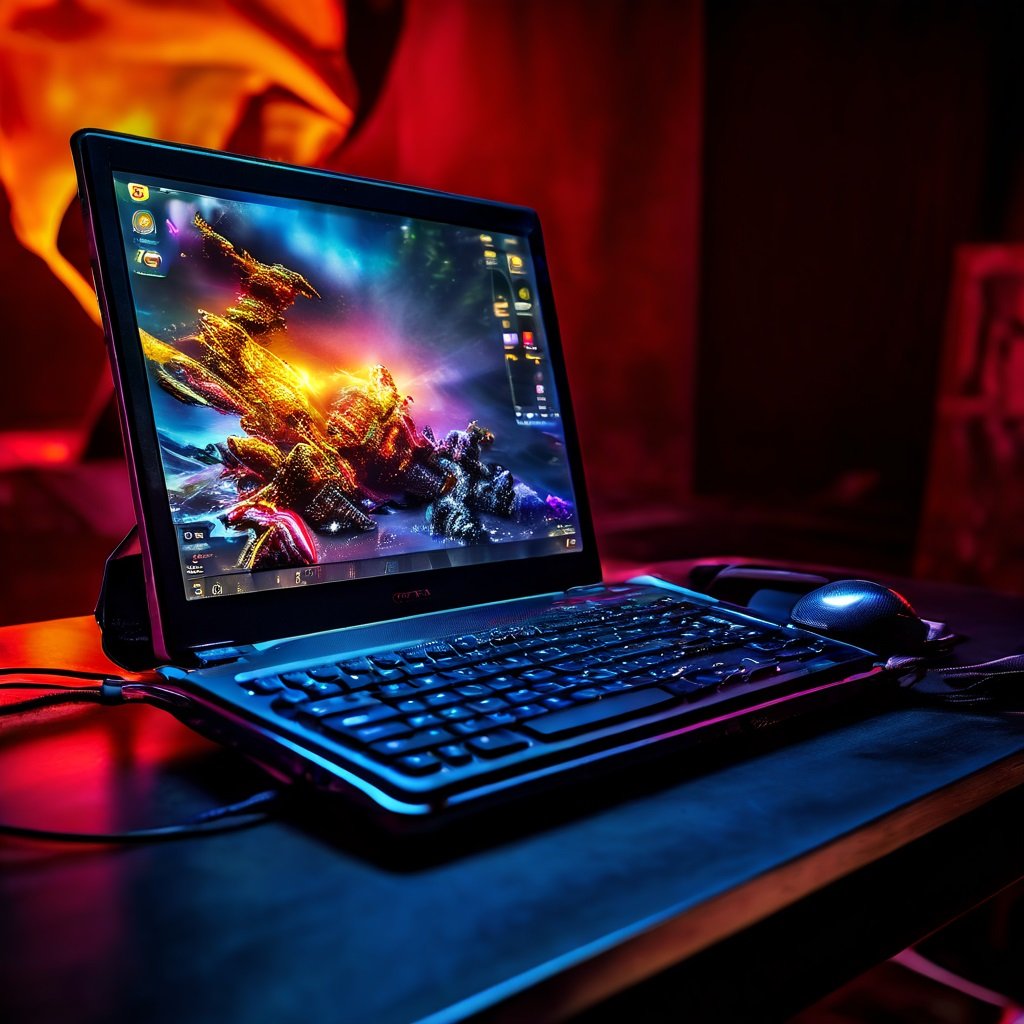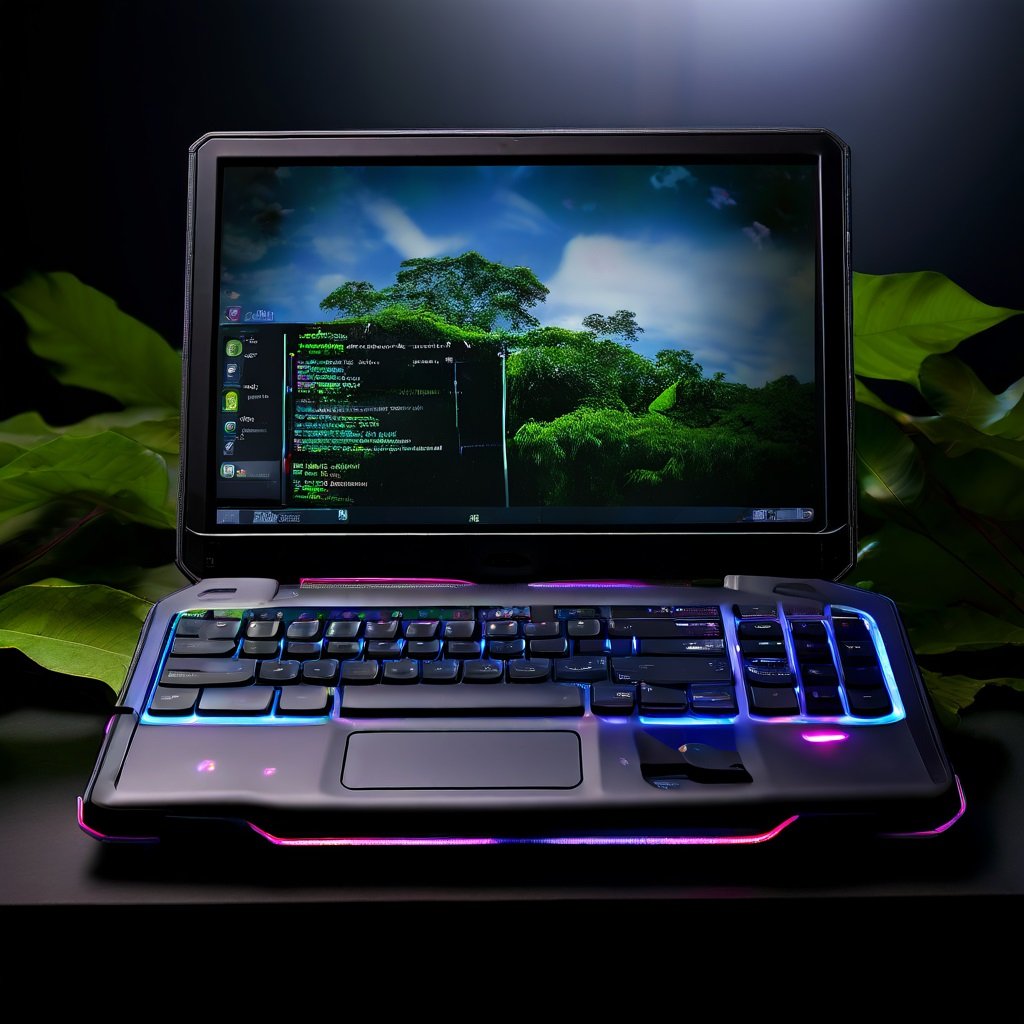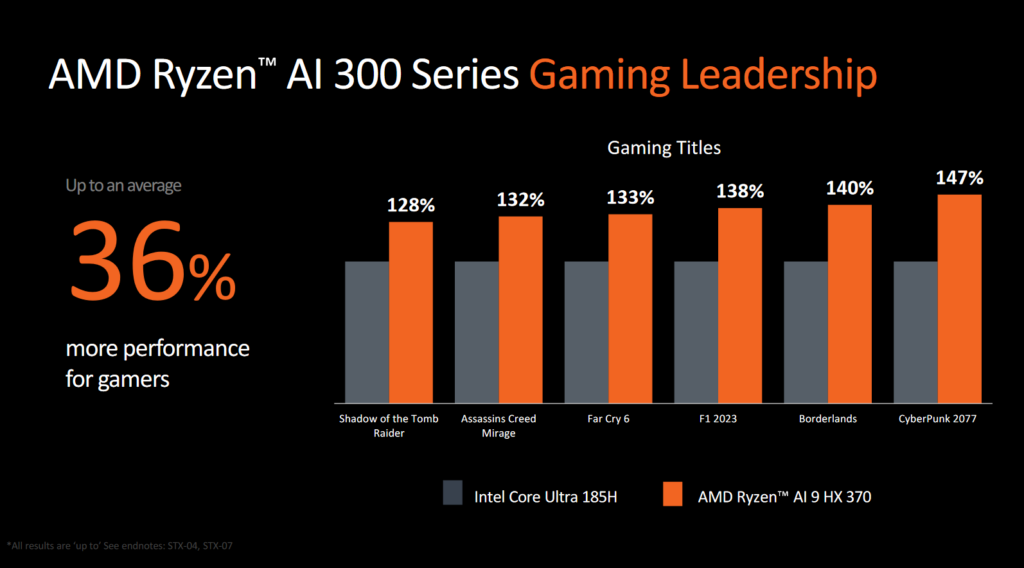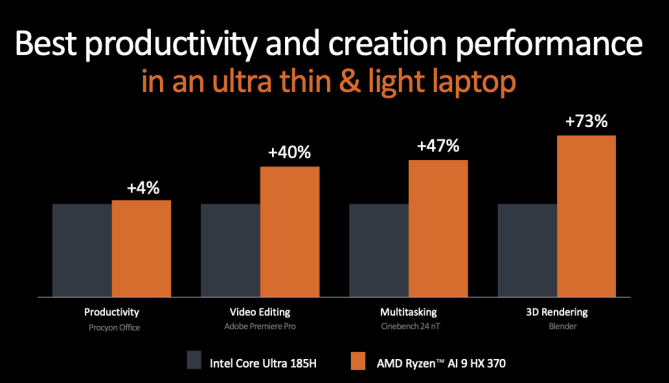GPD er klar til å avduke GPD Win 5, den etterlengtede etterfølgeren i den anerkjente serien med håndholdte spill-PC-er, som ifølge ryktene skal være utstyrt med den kraftige AMD Ryzen AI 9 HX 370-prosessoren og Radeon 890M-grafikk, noe som lover betydelige forbedringer i spillytelse og brukeropplevelse.
Kunngjøring av GPD Win 5 nært forestående
Som offisiell GPD-distributør har vi mottatt informasjon om at GPD Win 4 snart vil bli tatt ut av produksjon, noe som tyder på at lanseringen av GPD Win 5 er nært forestående. Dette er i tråd med GPDs typiske produktsyklus, der nyere modeller erstatter eldre for å introdusere banebrytende teknologi og forbedret ytelse. Selv om vi ennå ikke kan bekrefte spesifikke detaljer om pris, tilgjengelighet eller forventet ankomsttidspunkt (ETA) for GPD Win 5, tyder utfasingen av Win 4 på at GPD forbereder seg på å lansere sin neste generasjons håndholdte spill-PC. Kunder som er interessert i de nyeste GPD-tilbudene bør holde seg oppdatert på offisielle kunngjøringer, ettersom selskapet sannsynligvis vil avsløre mer informasjon om Win 5s funksjoner, spesifikasjoner og lanseringstidspunkt i nær fremtid.
Hva kan vi forvente av GPD Win 5?
GPD Win 5 er ikke offisielt annonsert, men forventes å bli den neste iterasjonen i GPDs populære serie av håndholdte spill-PC-er. Win 5 bygger videre på suksessen til tidligere modeller som Win 4, og vil sannsynligvis inneholde banebrytende teknologi for å forbedre spillytelsen og brukeropplevelsen. Ryktene antyder at den kan være utstyrt med AMD Ryzen AI 9 HX 370-prosessoren, som kombinerer fire Zen 5-prosessorkjerner med åtte Zen 5c-kjerner, noe som potensielt gir ytelse tilsvarende seksten Zen 4-kjerner, noe som gjør den ideell for håndholdte gaming-enheter. Denne kraftige prosessoren kan kombineres med Radeon 890M integrert grafikk, noe som kan gi et betydelig løft i spillfunksjonene. Selv om spesifikke detaljer ennå ikke er bekreftet, forventes det at Win 5 vil videreføre GPDs satsing på kompakt, bærbar design, samtidig som den flytter grensene for ytelsen til håndholdte PC-spill.
Viktige funksjoner i AI 9 HX 370 CPU
AMD Ryzen AI 9 HX 370 er en banebrytende mobilprosessor som lover betydelige ytelsesforbedringer i forhold til sine forgjengere. Denne 12-kjerners, 24-tråds brikken har en hybridarkitektur med fire høytytende Zen 5-kjerner og åtte effektive Zen 5c-kjerner, som kan booste opp til 5,1 GHz. Den har 24 MB L3-cache og en imponerende 45 TOPS NPU, alt innenfor et konfigurerbart TDP-område på 15-54 W. Den integrerte Radeon 890M-grafikken, basert på RDNA 3.5-arkitekturen, leverer ytelse som kan sammenlignes med en bærbar RTX 2050, og oppnådde 41 986 poeng i Geekbench OpenCL-referansen - en forbedring på 40 % i forhold til forgjengeren. Tidlige referansetester tyder på at AI 9 HX 370 overgår Ryzen 9 8945HS med opptil 20 % i CPU-tester, med spesielt sterk flerkjerneytelse
Potensielle GPD Win 5-forbedringer
Basert på tilbakemeldinger fra brukerne og trender i markedet for håndholdte spill-PC-er kan GPD vurdere flere forbedringer for den kommende GPD Win 5. Disse potensielle forbedringene gjenspeiler brukernes krav og innovasjoner sett i konkurrerende enheter som AYANEO Flip og Steam Deck.
| Potensiell forbedring | Beskrivelse |
|---|---|
| Større skjerm | Brukerne etterspør skjermer på 7-8 tommer med mindre rammer for å få mer plass på skjermen, noe som vil være en attraktiv egenskap for produkter som GPD Win Mini. |
| Høyere oppdateringsfrekvens | En 120 Hz-skjerm med variabel oppdateringsfrekvens (VRR) er et populært krav for jevnere spilling. |
| OLED-skjerm | Mange brukere håper på en OLED-skjerm for bedre fargegjengivelse og kontrast. |
| Forbedret ergonomi | Bedre grep og potensielt litt større totalstørrelse for bedre komfort under lengre spilløkter. |
| Hall-effekt-joysticks | Disse anses som obligatoriske for langvarige, avdriftsfrie enheter. |
| Avtakbart batteri | Denne funksjonen kan forlenge enhetens levetid og gjøre det enklere å bytte den ut. |
| Forbedret kjøling | Forbedret varmestyring, muligens med dampkammerdesign, for å opprettholde ytelsen og redusere viftestøyen. |
| USB-A-port | Noen brukere ber om å få tilbake en USB-A-port for å få bredere kompatibilitet med periferiutstyr. |
| Større knapper og pinner | Forbedrede inndatakontroller for en mer komfortabel spillopplevelse. |
Disse potensielle forbedringene er i tråd med brukernes ønsker og markedstrender, og kan potensielt posisjonere GPD Win 5, sammen med GPD Win Mini, som svært konkurransedyktige enheter i markedet for håndholdte spill-PC-er. Det er imidlertid viktig å merke seg at GPD må balansere disse funksjonene med faktorer som pris, batterilevetid og enhetens størrelse for å skape et godt avrundet produkt.
Referanseverdier for ytelse
AMD Ryzen AI 9 HX 370 CPU, som forventes å drive GPD Win 5, har vist imponerende ytelse i tidlige benchmarks. Her er et sammendrag av de lekkede referanseresultatene:
| Referansepunkt | Ryzen AI 9 HX 370 | Ryzen 9 8945HS | Forbedring |
|---|---|---|---|
| Geekbench 6 Single-Core | 2,544 | 2,380 | 6.9% |
| Geekbench 6 Multi-Core | 14,158 | 11,775 | 20.2% |
| CPU-z Single-Thread | Ikke spesifisert | Ikke spesifisert | Opp til 25 prosent |
| CPU-z Multi-Thread | Ikke spesifisert | Ikke spesifisert | Opp til 25 prosent |
Ryzen AI 9 HX 370 viser betydelige forbedringer i forhold til forgjengeren, spesielt når det gjelder flerkjerneytelse. Det er verdt å merke seg at disse benchmarkene ble utført med prosessoren i en strømeffektiv "stille" modus, noe som tyder på et enda høyere ytelsespotensial når den kjører uten begrensninger. Den integrerte Radeon 890M GPU-en viser også lovende resultater:
| Referansepunkt | Radeon 890M | Radeon 780M | Forbedring |
|---|---|---|---|
| Geekbench OpenCL | 41,986 | 30,151 | 39.3% |
Dette plasserer Radeon 890Ms ytelse på nivå med RTX 2050 for bærbare PC-er, noe som er et betydelig sprang for integrert grafikk. Interessant nok nærmer ytelsen til Ryzen AI 9 HX 370 seg ytelsen til AMDs avanserte mobilprosessorer. I Geekbench 6 er den bare 11 % tregere i enkeltkjernetester og 16,2 % tregere i flerkjernetester sammenlignet med Ryzen 9 7945HX3D, til tross for at den har færre kjerner og kjører i en strømeffektiv modus. Disse referansetestene tyder på at GPD Win 5, hvis den er utstyrt med Ryzen AI 9 HX 370, kan tilby en betydelig ytelsesoppgradering i forhold til forgjengeren, og potensielt kan konkurrere med noen bærbare gaming-maskiner i en mye mer kompakt formfaktor.
Prestasjonssammenligning og forventninger
AMD Ryzen AI 9 HX 370-prosessoren som forventes å drive GPD Win 5, representerer et betydelig sprang i ytelse sammenlignet med Ryzen 7 8840U som finnes i GPD Win 4. Her er en sammenligning av forventet ytelse og brukernes forventninger:
| Aspekt | AMD Ryzen AI 9 HX 370 (GPD Win 5) | AMD Ryzen 7 8840U (GPD Win 4) |
|---|---|---|
| CPU-kjerner/tråder | 12 kjerner / 24 tråder | 8 kjerner / 16 tråder |
| CPU-arkitektur | Zen 5 + Zen 5c (hybrid) | Zen 4 |
| Maks Boost-klokke | 5,1 GHz | 5,1 GHz |
| GPU | Radeon 890M (RDNA 3.5) | Radeon 780M (RDNA 3) |
| GPU-beregningsenheter | 16 CUer | 12 CUs |
| NPU-ytelse | 50 TOPS | 16 TOPS |
Forventninger til ytelse:
- CPU-ytelse: Ryzen AI 9 HX 370 forventes å gi betydelig bedre ytelse med flere tråder takket være det økte antallet kjerner og hybridarkitekturen. Tidlige referansetester tyder på en 20-25 % forbedring i multikjerneytelse sammenlignet med forrige generasjon prosessorer
- GPU-ytelse: Radeon 890M i HX 370 forventes å gi 30-40 % bedre grafikkytelse sammenlignet med Radeon 780M. Benchmark-resultatene viser at 890M oppnådde 41 995 poeng i Geekbench OpenCL, noe som er 39,3 % høyere enn 780Ms poengsum på 30 151
- AI-ytelse: Med den forbedrede NPU-enheten som tilbyr 50 TOPP med AI-beregningskraft, forventes HX 370 å gi betydelig bedre resultater enn 8840U i AI-relaterte oppgaver.
- Energieffektivitet: Til tross for ytelsesforbedringene er HX 370 designet for å operere innenfor et lignende strømforbruk (15-54 W), noe som potensielt kan gi bedre ytelse per watt, noe som er avgjørende for håndholdte spillkonsoller.
Brukernes forventninger og meninger:
- Spillytelse: Brukerne forventer jevnere spilling med høyere innstillinger i moderne titler. Ytelsesøkningen forventes å gi 60 FPS i mer krevende spill som Win 4 slet med.
- Emulering: Samfunnet forventer bedre ytelse i emulatorer, særlig for mer krevende systemer som PS3 og Nintendo Switch.
- Multitasking: Med det økte antallet kjerner ser brukerne frem til bedre multitasking-egenskaper, spesielt for innholdsskapere som bruker enhetene sine til både spill og produktivitet.
- AI-funksjoner: Det er knyttet stor spenning til de potensielle AI-forbedrede funksjonene som den kraftige NPU-enheten kan muliggjøre, for eksempel forbedret oppskalering for spill og forbedret undertrykkelse av bakgrunnsstøy for strømming.
- Termikk og batterilevetid: Brukerne er nysgjerrige på hvordan GPD vil håndtere varmeeffekten fra den kraftigere brikken, og håper på forbedringer i kjøleutformingen. Det er også interesse for å se hvordan batterilevetiden vil bli påvirket.
- Bekymringer knyttet til pris: Noen brukere uttrykker bekymring for potensielle prisøkninger på grunn av den mer avanserte maskinvaren.
Generelt er brukerne begeistret for de potensielle ytelsesforbedringene som Ryzen AI 9 HX 370 kan gi GPD Win 5. Det er imidlertid også en forsiktig optimisme, og brukerne håper at GPD kan implementere den nye maskinvaren på en effektiv måte for å få fullt utbytte av kapasiteten og samtidig opprettholde god termisk ytelse og batterilevetid. Vil vi se fortsatt støtte for OcuLink i GPD WIN 5?
GPD Win 5 Prisforventninger
GPD Win 5 forventes å komme med en prislapp som er noe høyere enn forgjengeren GPD Win 4 2024, først og fremst på grunn av inkluderingen av den kraftigere AMD Ryzen AI 9 HX 370-prosessoren. Bransjeanalytikere forventer en prisøkning på omtrent 5-10 % sammenlignet med lanseringsprisen på GPD Win 4 2024. Selv om GPD nylig har introdusert OLED-teknologi i GPD DUO-modellen, er det lite sannsynlig at Win 5 vil ha en OLED-skjerm. I stedet forventes det at GPD vil fokusere på å forbedre spillopplevelsen ved å innlemme VRR (Variable Refresh Rate) og 120 Hz oppdateringsfrekvens. Denne avgjørelsen er i tråd med kravene fra spillmiljøet og bidrar til å opprettholde et konkurransedyktig prispunkt. Prisstrategien for GPD Win 5 vil sannsynligvis bli påvirket av flere faktorer:
- Komponentkostnader: AMD Ryzen AI 9 HX 370-prosessoren er en avansert prosessor, noe som vil bidra til økte produksjonskostnader.
- Skjermteknologi: Selv om det ikke er OLED, vil inkluderingen av VRR og 120 Hz oppdateringsfrekvens øke den totale kostnaden.
- Markedsposisjonering: GPD har som mål å opprettholde sitt konkurransefortrinn i markedet for håndholdte spill-PC-er, og balanserer ytelsesforbedringer med rimelige priser.
- Produksjonsskala: Etter hvert som produksjonsvolumene øker, kan GPD være i stand til å kompensere for noen av de økte kostnadene knyttet til nyere komponenter.
På bakgrunn av disse faktorene kan forbrukerne forvente at GPD Win 5 vil bli priset på samme måte som GPD Win 4 2024 ved lansering, med en potensiell økning på 5-10 %. Denne prisstrategien gjør det mulig for GPD å levere betydelige ytelsesforbedringer og samtidig holde enheten tilgjengelig for målgruppen. Det er verdt å merke seg at de endelige prisene vil bli bekreftet nærmere den offisielle lanseringsdatoen, og kan variere avhengig av spesifikke konfigurasjoner og regionale faktorer. I tillegg, som med tidligere modeller, kan tidlige brukere gjennom crowdfunding-plattformer som Indiegogo få tilgang til spesialpriser eller pakketilbud

Tidslinje for lansering av GPD Win 5
GPD Win 5 er en etterlengtet enhet i det håndholdte spill-PC-miljøet, og entusiastene venter spent på lanseringen og de forbedringene den kan medføre. Her er et sammendrag av forventet tidslinje og tilgjengelighet:
| Arrangement | Forventet tidsramme |
|---|---|
| Kunngjøring | August - september 2024 |
| Indiegogo-kampanje | September - oktober 2024 |
| Levering til støttespillere | Oktober - november 2024 |
| Tilgjengelighet i detaljhandelen | November - desember 2024 |
Enheten forventes i første omgang å bli tilbudt gjennom en Indiegogo-kampanje, i tråd med GPDs tradisjonelle crowdfunding-tilnærming. Denne tidslinjen tar sikte på å gjøre GPD Win 5 tilgjengelig akkurat i tide til høytiden. Etter den innledende crowdfunding-fasen vil enheten være tilgjengelig gjennom offisielle GPD-distributører, inkludert DroiX, noe som sikrer bredere tilgjengelighet for forbrukere som foretrekker å kjøpe gjennom etablerte forhandlere. Potensielle kjøpere bør imidlertid være oppmerksomme på at utgivelsesdatoer for GPD-produkter noen ganger kan bli forsinket, noe som tidligere lanseringer har vist.















